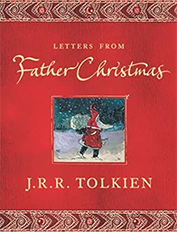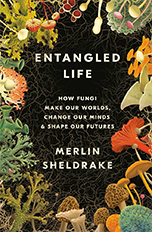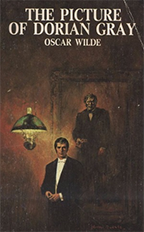The best books I read in 2023
View the rest of my favorites here.
LETTERS FROM FATHER CHRISTMAS
by J. R. R. Tolkien

“Polar Bear sends love. He is just getting better. He has had Whooping Cough!!”
A collection of letters written by J. R. R. Tolkien (author of Beowulf: The Monsters and the Critics) to his young children, Letters from Father Christmas is a delightful cross-sectional look at a father’s love. From simple beginnings, each subsequent letter expands upon the lore of Tolkien’s imagined North Pole, beginning with the slapstick antics of the titular Father Christmas and his friend the North Polar Bear and developing into a deep, frozen reservoir of history, featuring goblin wars, a cast of friendly characters, and no fewer than two made-up languages. Fans of Christmas spirit will find more than enough to enjoy here, but fans of Tolkien’s other work are in for a treat. Begun over a decade before the release of The Hobbit, Letters starts as a series of fun notes to children, but as years pass, Tolkien can’t help but let his other work blend in. The characteristic linguistic and narrative world building that brought The Lord of the Rings to acclaim finds a home even here in the form of two separate alphabets, a handful of bellicose species, and that aforementioned snowball of lore. Set against a backdrop of war, interbellum, and economic hardship and written by an author beloved around the world, I loved Letters for its stories but also found myself going back to investigate the context of each letter, every one offering as much a glimpse into the life of Tolkien as a parent as it is what it says on the box: a letter from Father Christmas.
ENTANGLED LIFE

by Merlin Sheldrake
“Mycelium is a living, growing, opportunistic investigation—speculation in bodily form.”
Every good scary story leaves its viewers with an irrational fear. Stephen King’s It inculcated a worldwide fear of clowns. Jaws reminded us to be scared of sharks. The Shining made us afraid of Colorado. This year, two months spent buried deep in the mycelium of the Last of Us universe left me and those around me with a newly-discovered, deep-set fear of mushrooms.
Most fears are easily avoided. Sharks only live in the ocean, clowns sprout naturally from sites of animal abuse, and Colorado is a fictional location. But mushrooms, or, more accurately, fungi, outweigh animals six-to-one. That’s not by number of organisms, but by weight. With twelve gigatons of fungi surrounding us at all times, fear feels futile. But as author Martin Sheldrake softly explained to me, it’s also unnecessary.
It’s easy to have a restrictive image of fungi, focusing exclusively on portobello, psilocybin, and 1-up varieties. But the mushrooms we know and ignore are just a piece of an incredibly diverse kingdom represented by a variety of organisms, from the single-celled yeasts that aerate our bread to the species from which penicillin was first synthesized to parasitoids like Cordyceps whose spores invade insect immune systems, turning them into mushroom zombies.
The pizza-and-salad-minded among us are quick to group fungi in with vegetables, but this culinary focus obstructs a truer reading of the kingdom: fungi are weird. Visually comparable to plants by the undiscerning human eye, these organisms are genetically closer to animals and physically something completely different. Some species have demonstrated a sort of distributed internal memory, allowed to grow mycelial tendrils toward a food source and then amputated at the origin point, only to grow in the same direction even with the food source removed. Fungi have proven fundamental in food chain cycles but lack the limelight interest of animal and plant species, being content to wait in the soil and degrade the dead. Most of the world’s coal comes from a specific geological era beginning after the evolution of trees but before fungi evolved to break down the hard exterior of these vascular plants, creating an entire layer of fossil evidence for a time before the miracle of fungi. Today, fungi have shown promise as candidates to break down both plastics and radioactive material untouchable by plants and animals. Entire forest ecosystems live and die on the success of the fungal systems that connect tree roots underground.
I’m rambling, but once you’ve been inducted into the cult of the mushroom, it’s hard not to.
HUMANKIND
by Rutger Bregman

“Over the last several decades, extreme poverty, victims of war, child mortality, crime, famine, child labour, deaths in natural disasters and the number of plane crashes have all plummeted. We’re living in the richest, safest, healthiest era ever.”
Bregman’s Utopia for Realists made the first edition of these lists back in 2020. I was an absolute sucker for scientific optimism back then, being just a few years out of college and at the end of a particularly special and fun political era. Three years out, the world as seen through the rear-view mirror doesn’t exactly breathe progress and prosperity. The pandemic meant to mar only 2020’s scrapbooks has instead grown so long a tail that we’ve agreed to accept it into the home and let it stay for a while so long as the kids don’t get too attached. The political trends that cultivated 2016 weren’t so much abated by subsequent years as they were momentarily contested and siloed, allowed to fester in their own malodorous bubbles. And as world economies struggle to adapt to changes brought on by the various stages of an old-news pandemic, it’s hard not to feel left behind as the decades-long process of wealth accumulation by few at the expense of many accelerates.
The times as I’ve painted them look bleak. Bregman doesn’t see them that way. In his second book, the Dutch writer sticks to the path he’d carved in his first, adhering still to his optimistic view of the present, even against all the evidence I’ve presented. One of his early counter-arguments is that we’re just not built to see how good we have it. He quotes Lebanese statistician Nassim Nicholas Taleb’s “we are not rational enough to be exposed to the press” and the Swiss writer Rolf Dobelli’s “news is to the mind what sugar is to the body” in presenting the then-rare, now growing-in-popularity idea that our news consumption is bad for us. We’re told it’s good to be informed, and it can’t be better to know nothing, but before we even ask if we want to know about everything that happens, maybe we’d better ask “should we?”. This question, borne in my head sometime in the last couple of years, and reiterated by this book, has stuck around louder after I read a few news stories about a series of murders that occurred in a state far away from my own committed by a perpetrator who had since been caught. The murders weren’t relevant to me or to anyone I knew. I wasn’t in any danger, nor was anyone around me. It’s statistically unlikely that I will ever come into direct contact with anyone personally touched by this case. But I, just like millions of Americans, had to learn about it. The result is that the topic of murder weighs just a little heavier on the minds of readers. To some, even most, the effect might seem innocuous. But we’re no longer reading one news story a day, we’re reading a constant stream of them, a steady flow of danger sent straight to our brains. Further, it’s less and less often that we read the stories behind the headlines, both divorcing us from context and allowing for a denser package of dread to be dissolved into each cubic centimeter of liquid that roams our neural gyri.
In the end, what we’re left with is a mind full of every digestible square inch of the world’s terror, depression, and idiocy, and little to nothing to tether these facts to the reality that birthed them. By devoting the bulk of our information processing faculties to these bombastic and brutal stories, we begin to overwrite processing time otherwise spent attending to often more positive interactions that are far less impactful on the world but far more important to our individual lives. Even more importantly, when we pull our heads from the Sahara-dwarfing deluge of news sand, we might realize that the stories that generate the most clicks are often those that incite the most anger, not necessarily the ones that are important or valuable.
Rutger’s book starts here, at the idea that the information that our brains spend the most time attending to, and that the information industry shovels most eagerly toward us, often leaves us with a misguided understanding of the world and a tendency to weigh the negative over the positive. But unlike this review, he doesn’t spend too much time on the topic. Instead, Bregman endeavors to show that, by most metrics, and against nearly all popular conceptualizations, the best time to be alive for, at least for most people, is right now.
THE PICTURE OF DORIAN GRAY
by Oscar Wilde

“there is only one thing in the world worse than being talked about, and that is not being talked about.”
Fellas, does being a shithead make you ugly?
SPQR
by Mary Beard

“They create desolation and call it peace”
Tacitus
This book was my Roman Empire.
RAISIN D’OR: 1491
by Charles C. Mann

“An entire ear of teosinte has less nutritional value than a single kernel of modern maize.”
In fourteen hundred ninety-two, Columbus sailed the ocean blue. Two weeks later, on a whim, the natives gave their land to him! History is great and I love learning about it. Some of my formative memories involve being taught the faithful history of this country I’m proud to call home. Examples? Sure. How about the time the Indians sold all of North America for a few glass beads? That’s not just learning, it’s a riot. We all agree that this story is very funny. Silly natives, what have you been doing all this time? Relishing family bonds and engaging in the relatively equitable distribution of resources among neighbors in the interest of maintaining a healthy community? You morons! Invent child labor and sell moldy bread for profit.
Here’s another story: the first Thanksgiving, the time the Pilgrims came over on the Mayflower and charitably agreed to share their plentiful food with the fully nomadic Indian tribes totally unfamiliar with the concept of growing their own food. This scene is a favorite American pastime. When I was a child, my Kindergarten classmates and I were lucky enough to be able to devote an afternoon to cutting up paper grocery bags and turning them into faithfully-replicated indigenous tunics and feather head dresses. My native garb donned, I gratefully sat down at the Pilgrims’ table and thanked them for their hospitality and promises to share stories from their book about incest and repeated child sacrifice. Growing up in America is so cool.
Oops! In typical me fashion, I tasked myself with writing a blurb about a book I read and instead spent two paragraphs being a smarmy little shit. I’ll try to be more economical from here on out. 1491 is an American history textbook that tries to fill in the largest blank in the annals of North and South America: the centuries before European explorers arrived. I was interested by that promise alone: my years of schooling left me knowing little, almost nothing about the history of the people native to the continent I call home. Moreover, I’ve spent years unlearning what little I did learn. Mann’s offer goes further, though. Rather than proffering a dull overview of successive leaders, nations, and cultural practices, Mann peels back even the fundamentals we take for granted, ideas like the cultural and technological simplicity of the native Americans at time of contact, as well as our image of the people living from Atlantic to Pacific as mostly-nomadic bands of tipi-dwelling bison hunters.
1491 didn’t stop at filling in the areas of my understanding left blank by education and cultural exposure, it rewrote my understanding entirely. I’ve known for years that what happened to the native people of the western hemisphere was a tragedy. I assumed the scale at which this tragedy occurred was considerable, but I had no idea how massive.
In many ways, 1491 is that same tragedy you’d expect it to be, dedicating whole chapters to deaths dealt by the millions in the name of violence, cruelty, and, above all, disease. But while the book refuses to downplay the scale of tragedy dolled out to the Native Americans, it also doesn’t waste more pages than necessary painting them as simple, poor, pitiable victims. Pre-contact native cultures are painted throughout the book as advanced peoples relative to their means. Evidence is repeatedly presented showing that, given the choice between remaining in their European-style towns or retreating to the apparently inferior indigenous way of life, white settlers exposed to their native neighbors defect so often that Euro-American leaders recognize it as a survival-threatening problem and ban the practice entirely. Mann dispels the image of the continent-spanning Plains Indian almost immediately, showcasing the expansive diversity bolstered not only by the well-known standout Aztec and Inca empires, but also by the massive disappeared city of Cahokia in the southern United States and the agricultural villages inhabited by the first settlers of New England. Across its breadth, the book challenges more misconceptions held true now for centuries than I can adequately list here. I opened 1419 looking for a book on American history. I left with a wholesale reevaluation of my understanding of the field itself.